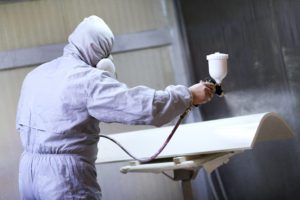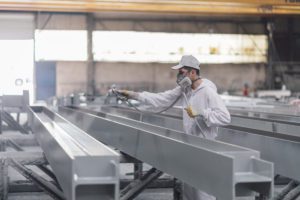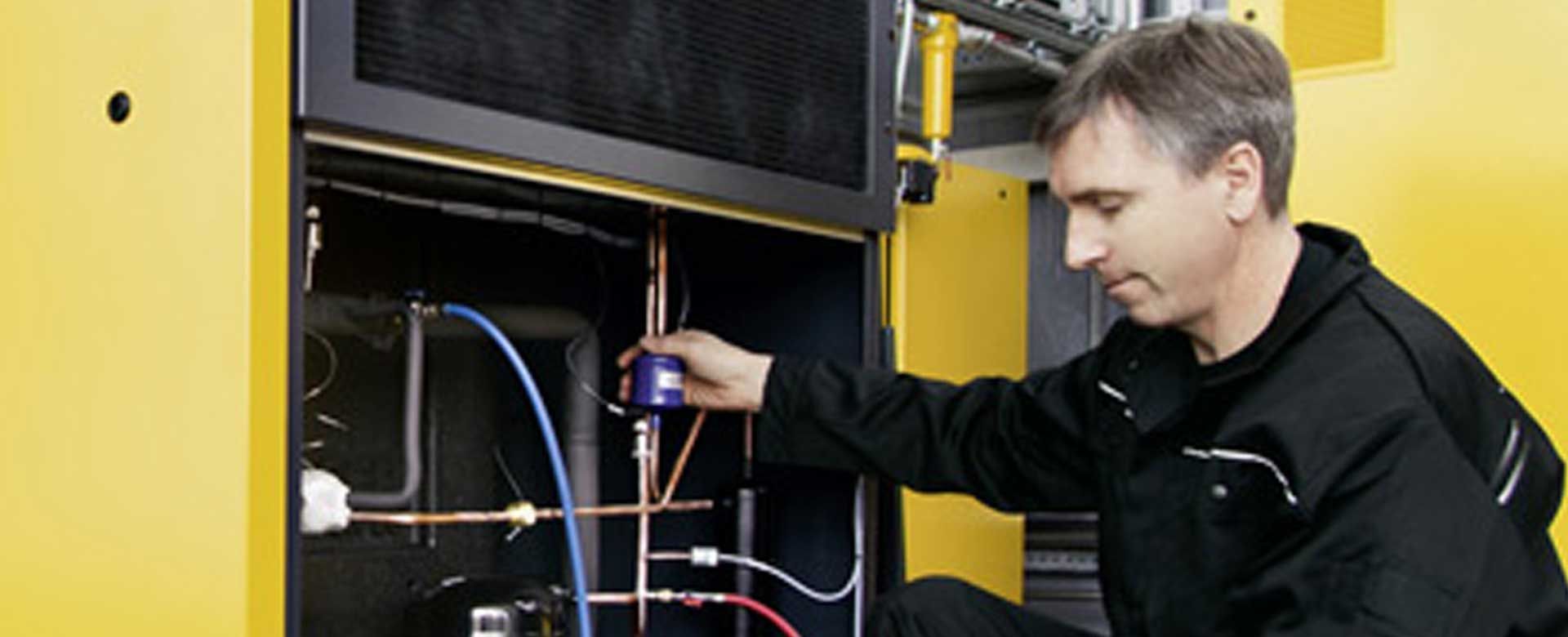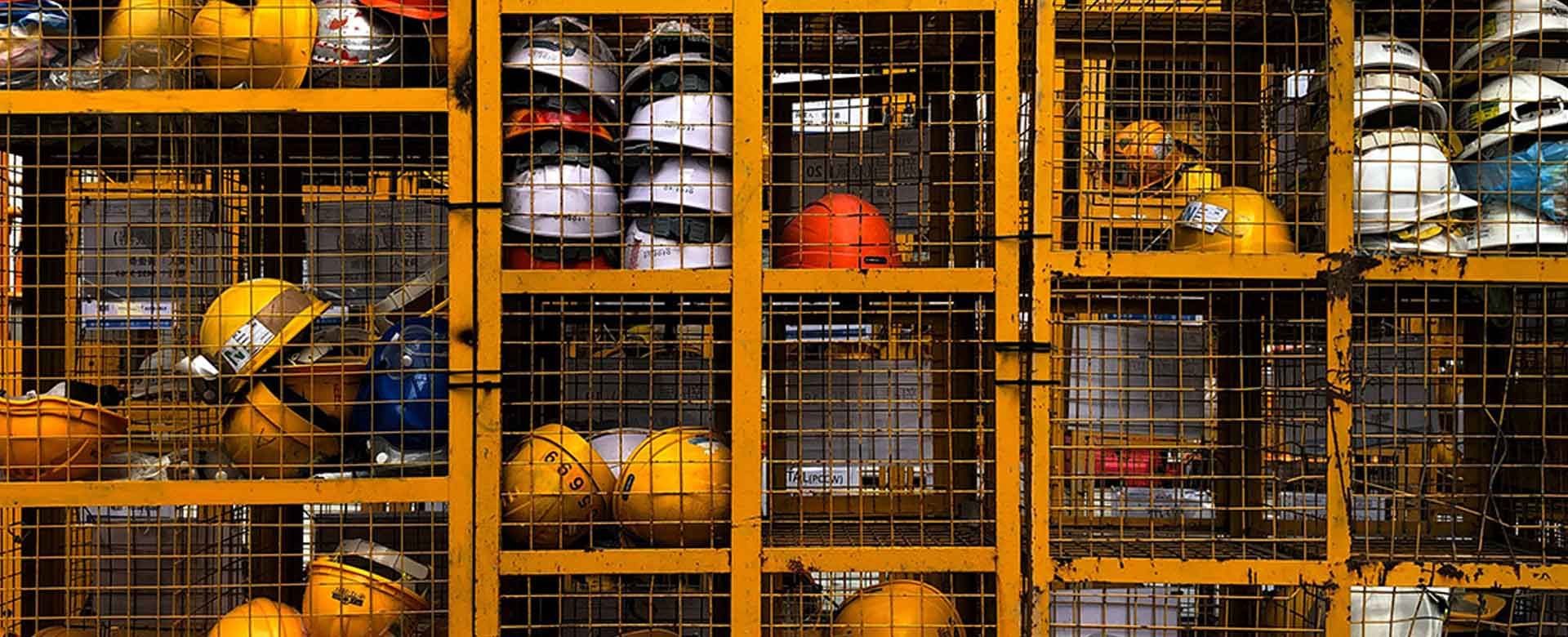What is viscosity and why is it important for a great finish
When spraying various metal and wood materials, it’s important to know what viscosity is and how it affects your finishing projects. By better understanding viscosity, your spray gun setup will see a uniform quality finish, and your future applications become more consistent and repeatable.
What is viscosity?

Simply put, the viscosity of a coating material indicates its ability to resist flow. That thickness of the coating material, in other words, is due to internal friction. Coating materials with higher thickness require greater air atomizing pressure or pump pressure, like when using AAA or Airless equipment, for example.
Obtaining a uniform finish using highly viscous fluids depends on the spray system setup. Knowing the viscosity measurements and your spray gun’s abilities are important to get a great finish.
Tip: Always obtain Product Data Sheets for each coating. These data sheets are helpful for establishing the initial coating spray viscosity, gun set-up, and pressure settings for a quality finish. So … take time to read those data sheets!
Viscosity measurements
Centipoise is a worldwide measurement of viscosity.
Unfortunately, the spray coating world does not use a common viscosity tool like a standard paint viscosity cup to set the factory/field viscosity. There must be 12 or more viscosity devices worldwide. The most common in the U.S. is Zahn, Ford, and DIN cups.
Each viscosity cup manufacturer makes cups with different capacities and opening sizes for light, medium, and thick coatings. So, measuring uniformity can be a challenge. Viscosity cup conversion charts are the best references to use to figure out the right spray viscosity across different cup brands.
Recommended spray viscosity
It helps to know what spray gun you have first. Then, we can recommend the spray viscosity. For example, for a Zahn, Ford, or DIN cup, we can advise which spray gun opening/nozzle size and atomizing air pressure will likely be your starting point. Refer to the conversion chart for a recommended viscosity.
You can cross-reference viscosities in seconds between four different viscosity cups at a given Centipoises.
For reference, Viscosity Conversions for Newtonian Fluids:
25ºC (degrees Celsius) is equal to 77ºF (degrees Fahrenheit).
| Centipoises | Ford Cup #4 | Zahn #2 | Zahn #3 | Zahn #4 | DIN 4 | Krebs Stormer |
| 1.0 | 9 | |||||
| 10.0 | 16 | 12 | ||||
| 15.0 | 17 | 15 | ||||
| 22.0 | 13.6 | 19 | 17 | |||
| 32.0 | 15.3 | 20 | 20 | |||
| 50.0 | 19.0 | 22 | 23 | |||
| 65.0 | 22.0 | 27 | 28 | |||
| 85.0 | 27.0 | 34 | 30 | |||
| 100.0 | 30.0 | 41 | 12 | 32 | ||
| 125.0 | 36.0 | 49 | 14 | 11 | 39 | |
| 140.0 | 40.0 | 58 | 16 | 13 | 46 | 52 |
| 165.0 | 46.0 | 66 | 18 | 14 | 50 | 54 |
| 200.0 | 50.0 | 82 | 23 | 17 | 55 | 56 |
| 225.0 | 55.0 | 25 | 18 | 64 | 59 | |
| 250.0 | 68.0 | 27 | 20 | 67 | 61 | |
| 275.0 | 74.0 | 32 | 22 | 70 | 62 | |
| 300.0 | 81.0 | 34 | 24 | 74 | 63 | |
| 320.0 | 86.0 | 36 | 25 | 79 | 64 | |
| 340.0 | 91.0 | 39 | 26 | 86 | 65 | |
| 370.0 | 99.0 | 41 | 28 | 94 | 66 | |
| 400.0 | 107.0 | 46 | 30 | 100 | 67 | |
| 435.0 | 116.0 | 50 | 33 | 110 | 68 | |
| 470.0 | 125.0 | 52 | 34 | 122 | 69 | |
| 500.0 | 133.0 | 57 | 37 | 134 | 71 | |
| 550.0 | 146.0 | 63 | 40 | 78 | ||
| 630.0 | 167.0 | 68 | 44 | 85 | ||
| 885.0 | 199.0 | 64 | 95 | |||
| 1070.0 | 270.0 | 100 | ||||
| 1290.0 | 105 | |||||
| 1760.0 | 114 | |||||
| 2270.0 | 129 | |||||
| 2700.0 | 136 | |||||
| 3620.0 | ||||||
| 4630.0 | ||||||
| 6340.0 | ||||||
| 9850.0 | ||||||
| 14800.0 |
Most coatings are formulated to be sprayed at 73ºF to 77ºF (21ºC to 25ºC). Check the viscosity and spray the coating in this temperature range. Every effort should be made to reach these temperatures for a uniform quality finish.
How to test viscosity
What you need:
- Viscosity Cup
- Stopwatch
- Thermometer with coating temperature conversion chart

Steps:
Prepare the material to be tested. Activate, reduce, mix, strain, etc.
- Raise or lower the coating temperature to 77º F.
- Submerge or fill the viscosity cup with a coating.
- Raise the cup out of coating or open flow from the opening and start the stopwatch.
- Always keep your eye on the cup opening. When the stream breaks, stop the watch and record how many seconds have passed.
Now you have the data to determine if you are at the coating manufacturer’s recommended spray viscosity for your spray gun.
If you do not have a factory viscosity recommendation, and you have to try several viscosities on your own, keep a spray gun settings journal “Coating Black Book.” Make notes and record your successful viscosity and coating temperature along with your gun settings for reference.
Viscosity summary
Sure, viscosity can be a pain to get right, but it can mean the difference between a great finish … and a not-so-good finish. Rather than waste time and materials, using these tried and true methods for understanding the right equipment needed, knowing the temperature, and recording can ensure a perfect finish every time.
Elevated can help
Still uncertain how to tell which products help you achieve a great finish or have questions about viscosity? We’re here to help your business. You can always contact us, telling us the spray equipment you’re using, your material, and your temperatures. We’ll have recommendations.
We’ve been helping customers like you get a perfect finish for more than 30 years. Plus, we can recommend abrasives, adhesives, and a variety of other products that help achieve a great finish.
It’s why we’ve been in business for six-plus decades.

7 common air compressor maintenance mistakes

Ergonomics and safety
